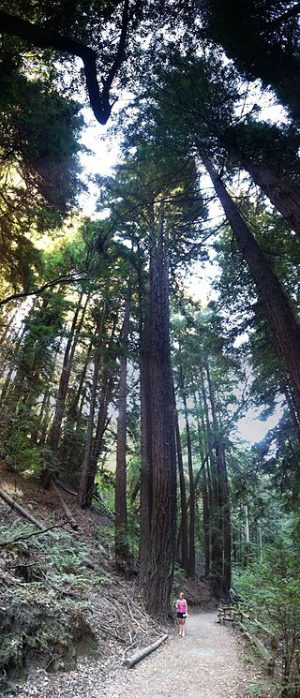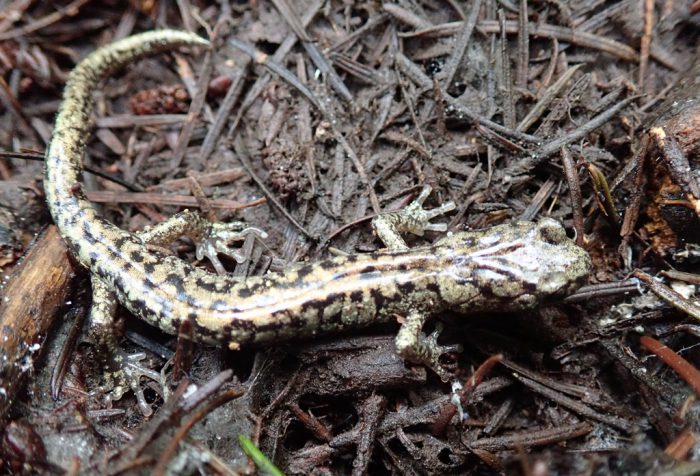The wandering salamander is a truly unique amphibian.
Normally, we're used to thinking of salamanders as creatures that are based either on the forest floor or in shallow rivers and creeks. Muddy, mossy, and moist, right?
But wandering salamanders are arboreal creatures. They live in trees. And not just any trees, either.
We're talking about the redwood forests of California and British Columbia—literally some of the tallest trees on the planet. And they live in the canopy of these trees, a.k.a. the upper areas of the forest.
So how does a little amphibian that can fit in the palm of your hand navigate life up there?
It has learned how to skydive!
Giddy gliders

Enormous redwood trees might seem like a strange habitat for a tiny salamander that needs to keep its skin moist all its life. But coastal redwood trees are often bathed in fog from the ocean—perfect for little amphibians! (Wikimedia Commons)
Thanks to an incredible sense of balance, the wandering salamander is able to glide from tree to tree. This adaptation makes living 80 m (260 ft.) above the ground a breeze.
What is really remarkable though, is that unlike other gliding animals—such as certain lizards, frogs, or squirrels—these salamanders are able to glide without any webbed toes or flaps of skin between their limbs. Aside from slightly larger feet and longer legs, they are very similar to the average salamander. So how do they do it?
Captured on camera
A biologist named Christian Brown wanted to know, so he headed out to the redwood forests of California to observe the salamanders in there natural habitat. But he encountered a problem. Brown found it difficult to get a good look at how the salamanders were gliding.
His solution? Capture a few salamanders and bring them back to his laboratory so he could capture their movements with a slow motion camera. After setting up a makeshift mini-wind tunnel (similar to what human skydivers would use to practice their runs), he sent some salamanders for their test flight!
You can check out the results below—first with non-arboreal species, and then with a wandering salamander. The difference is amazing. Watch for the tiny adjustments that the salamander makes to stay upright and endlessly gliding. So impressive!
 This salamander splits its time between the ground and the highest treetops of its forest habitat. (Wikimedia Commons)
This salamander splits its time between the ground and the highest treetops of its forest habitat. (Wikimedia Commons)









